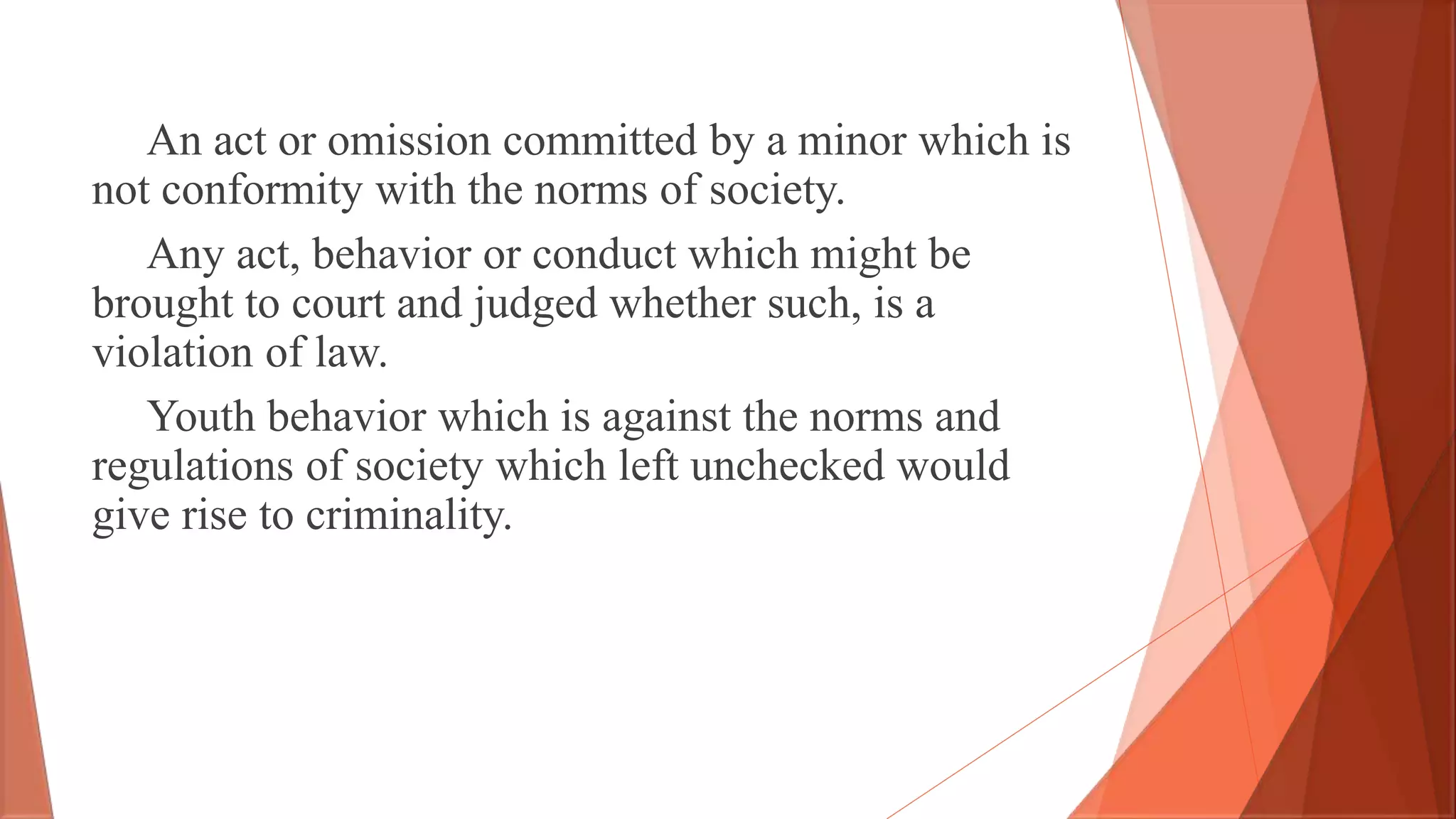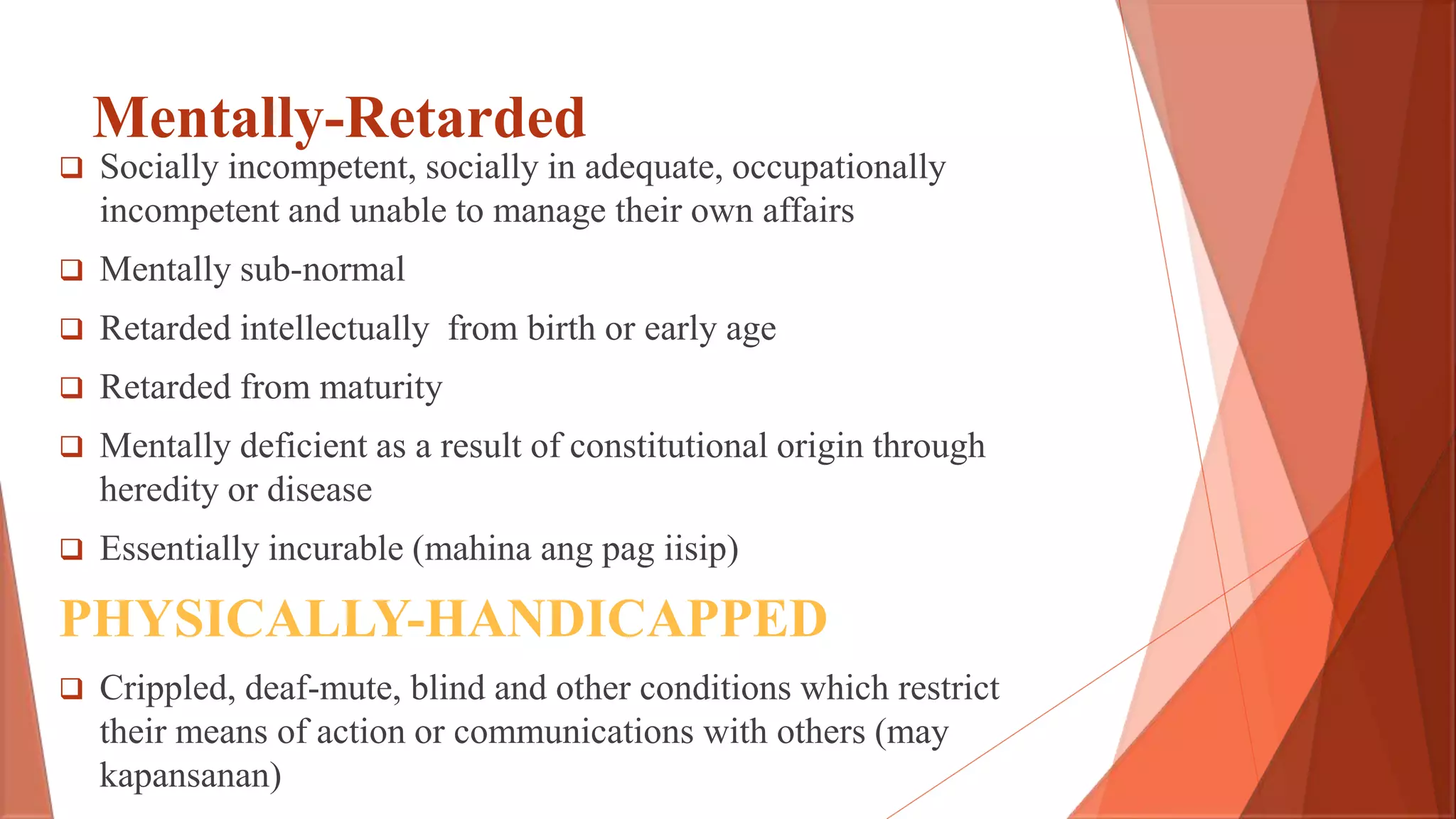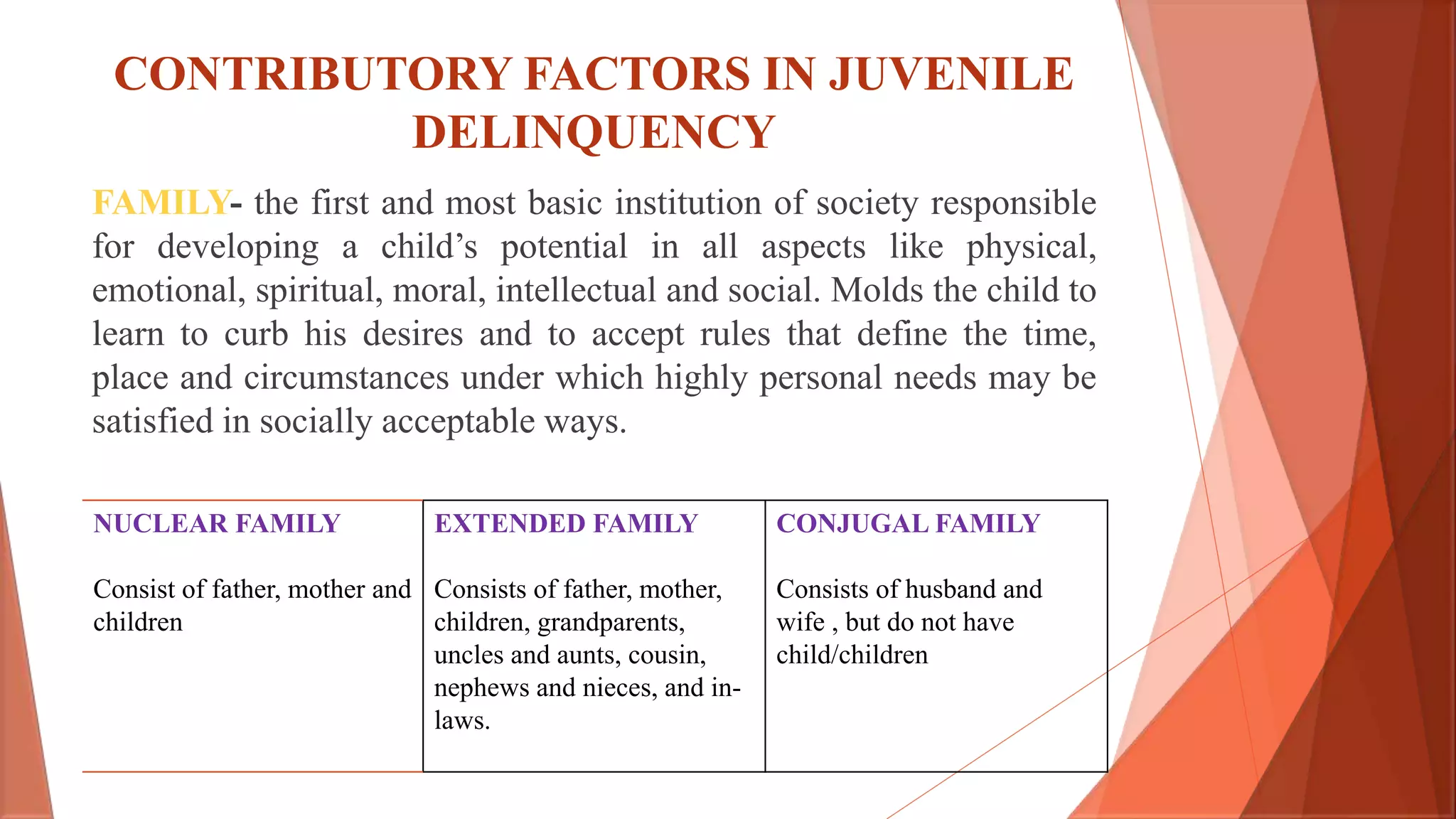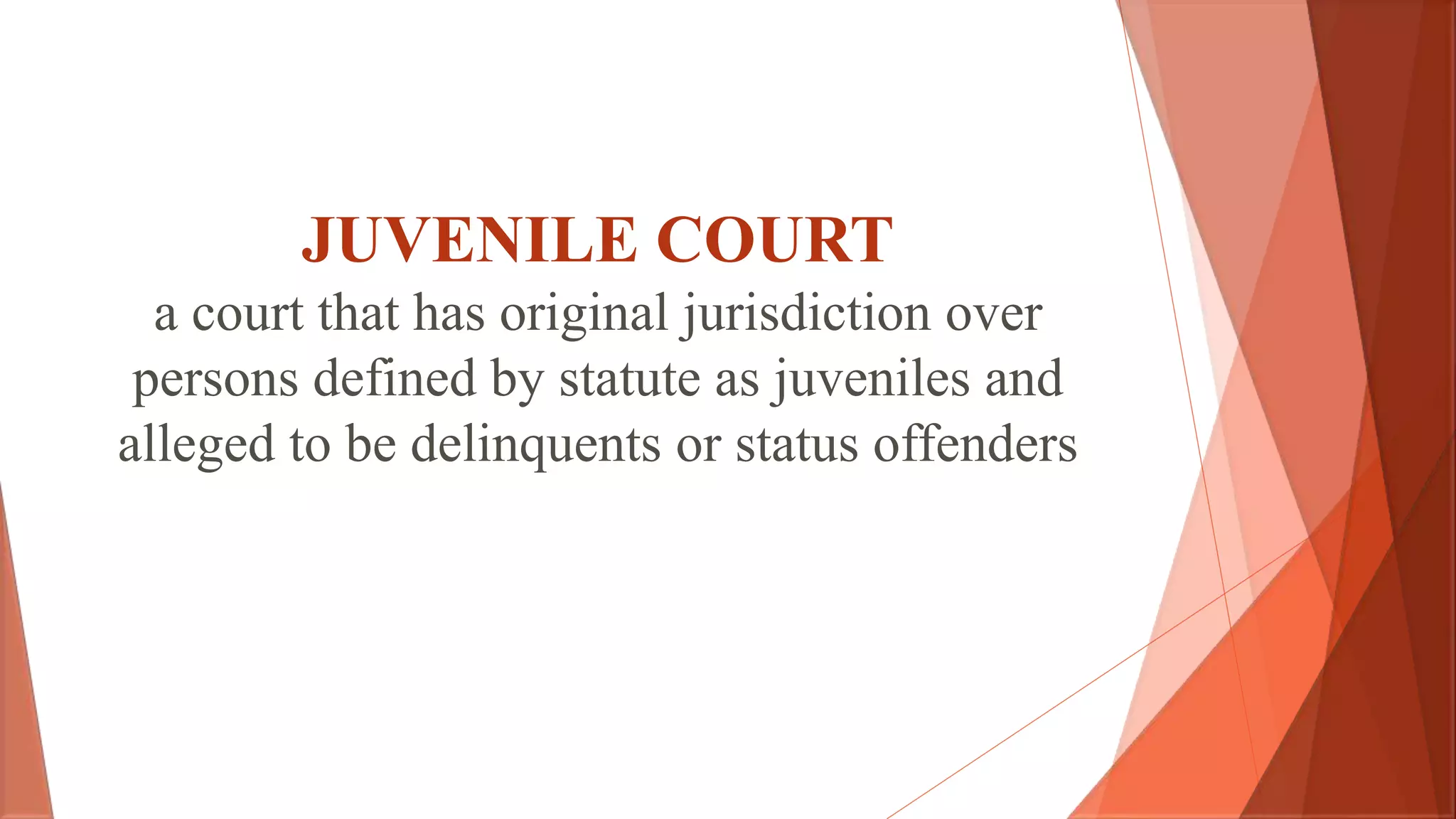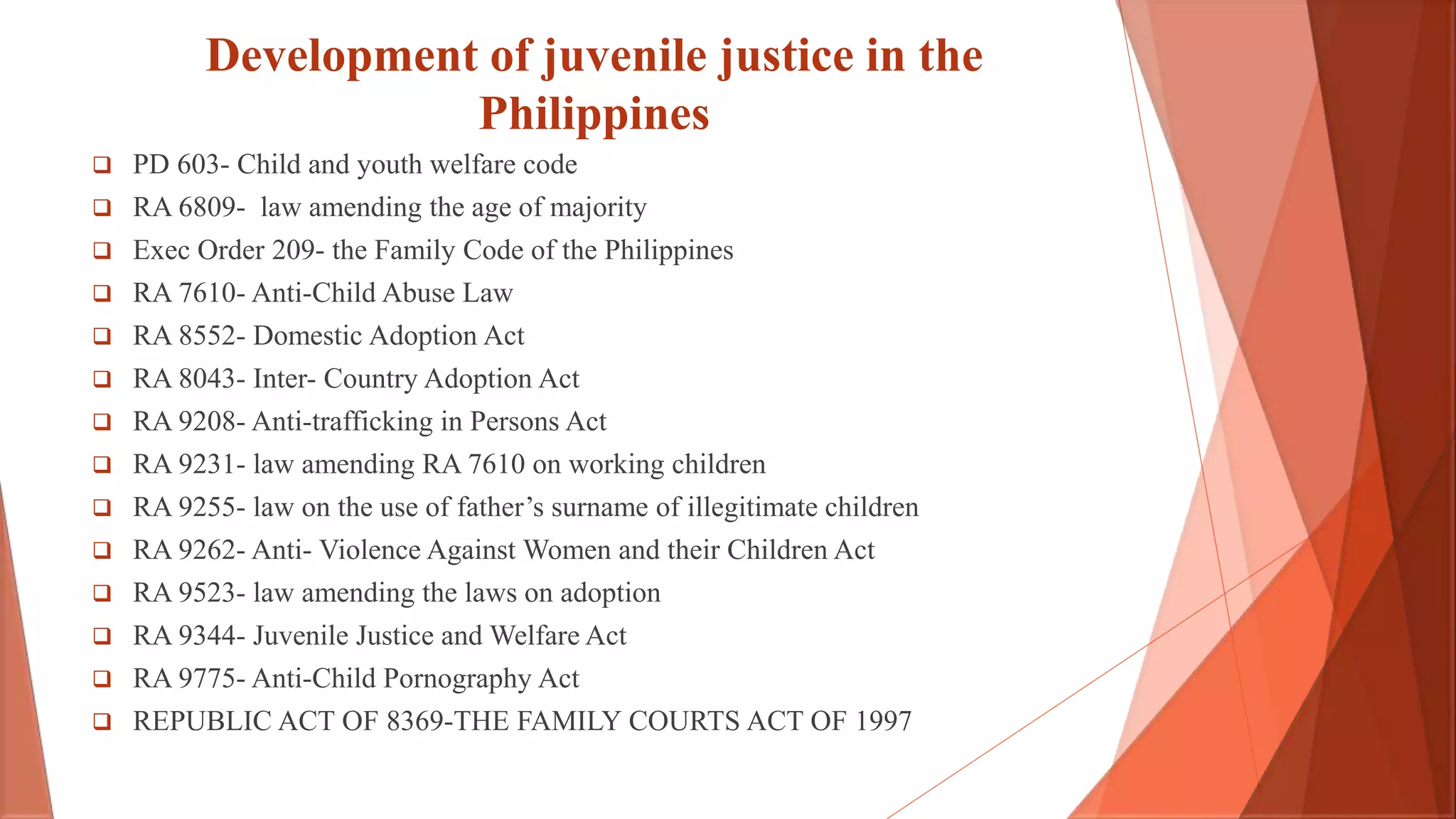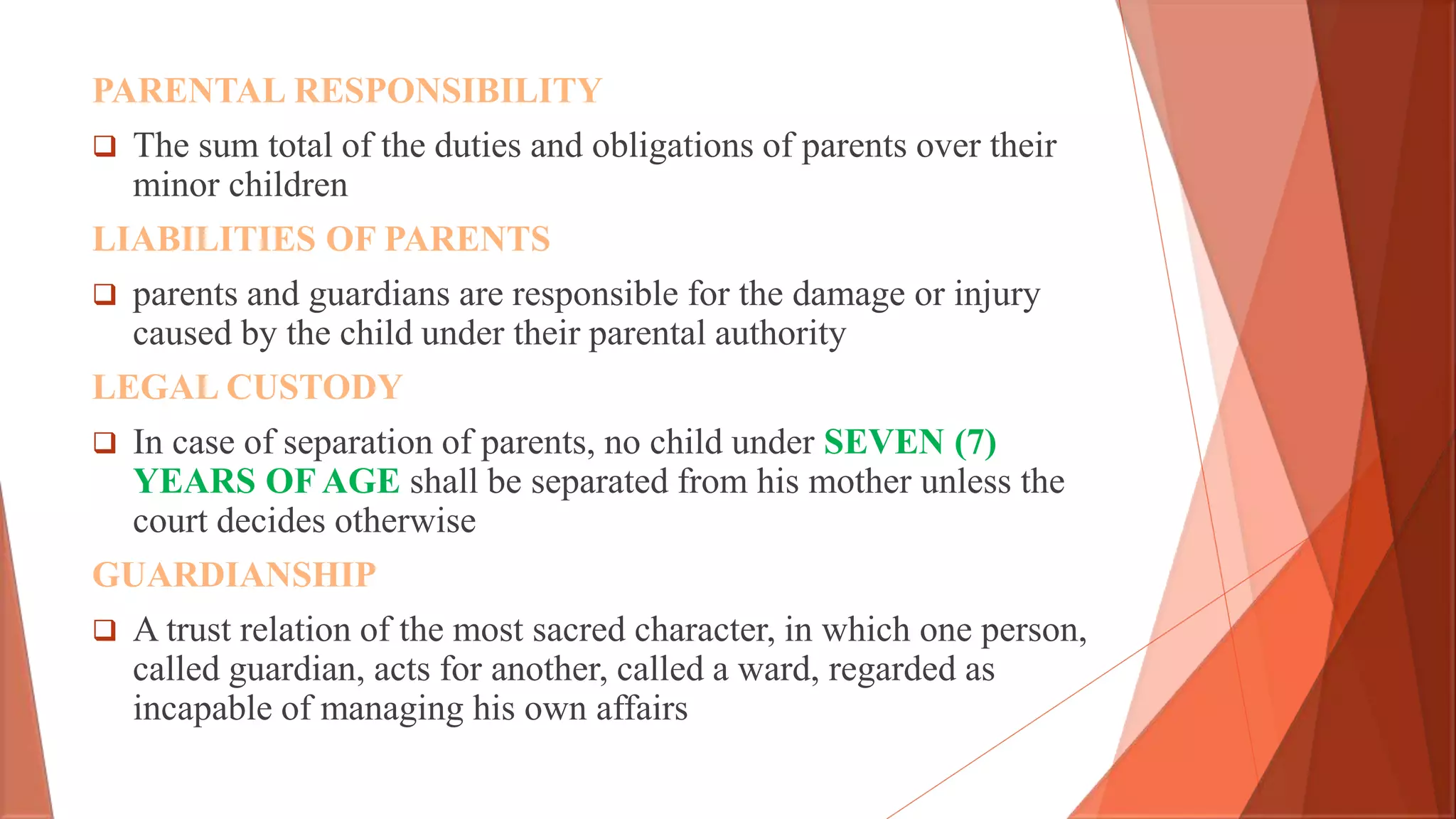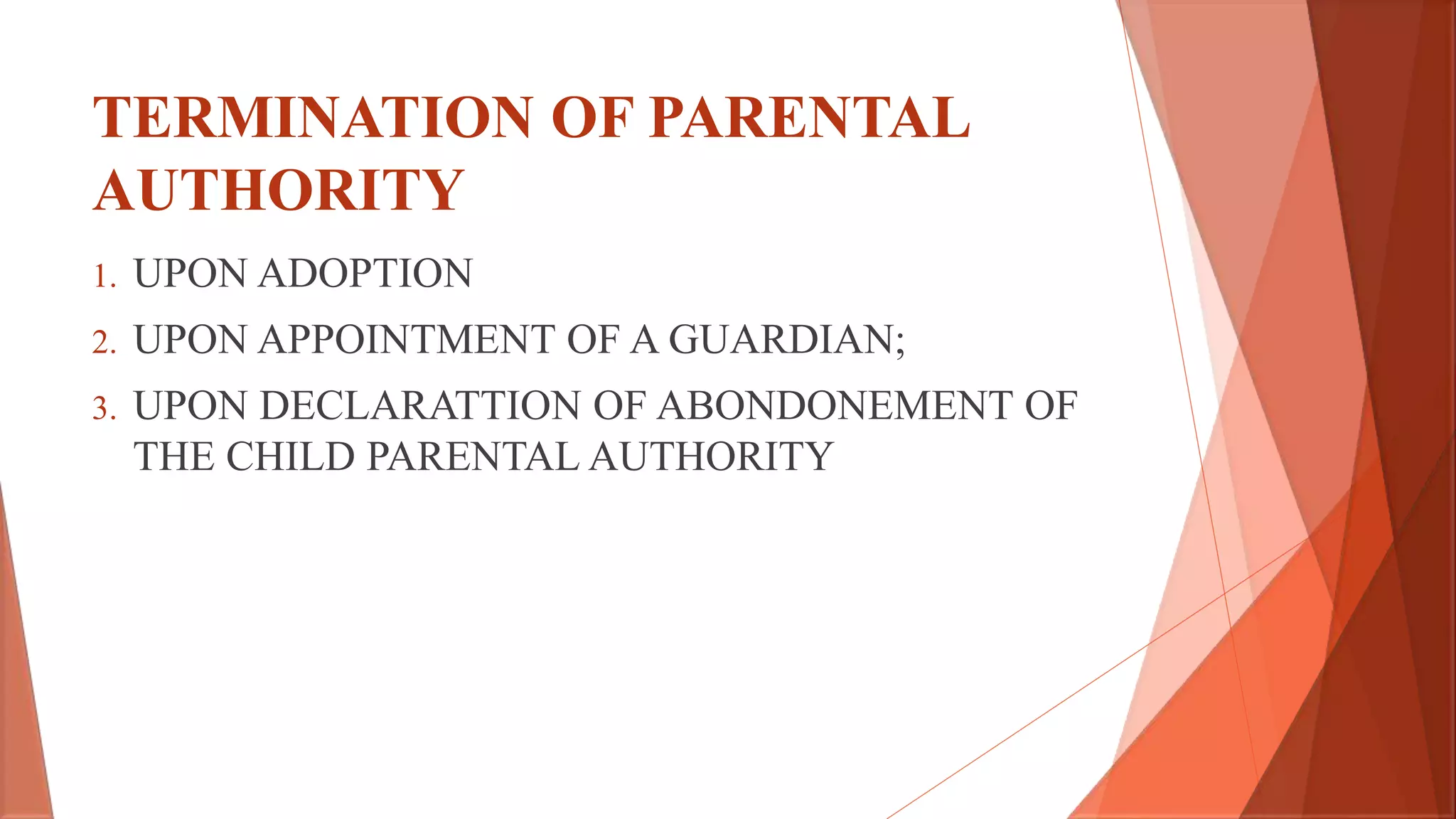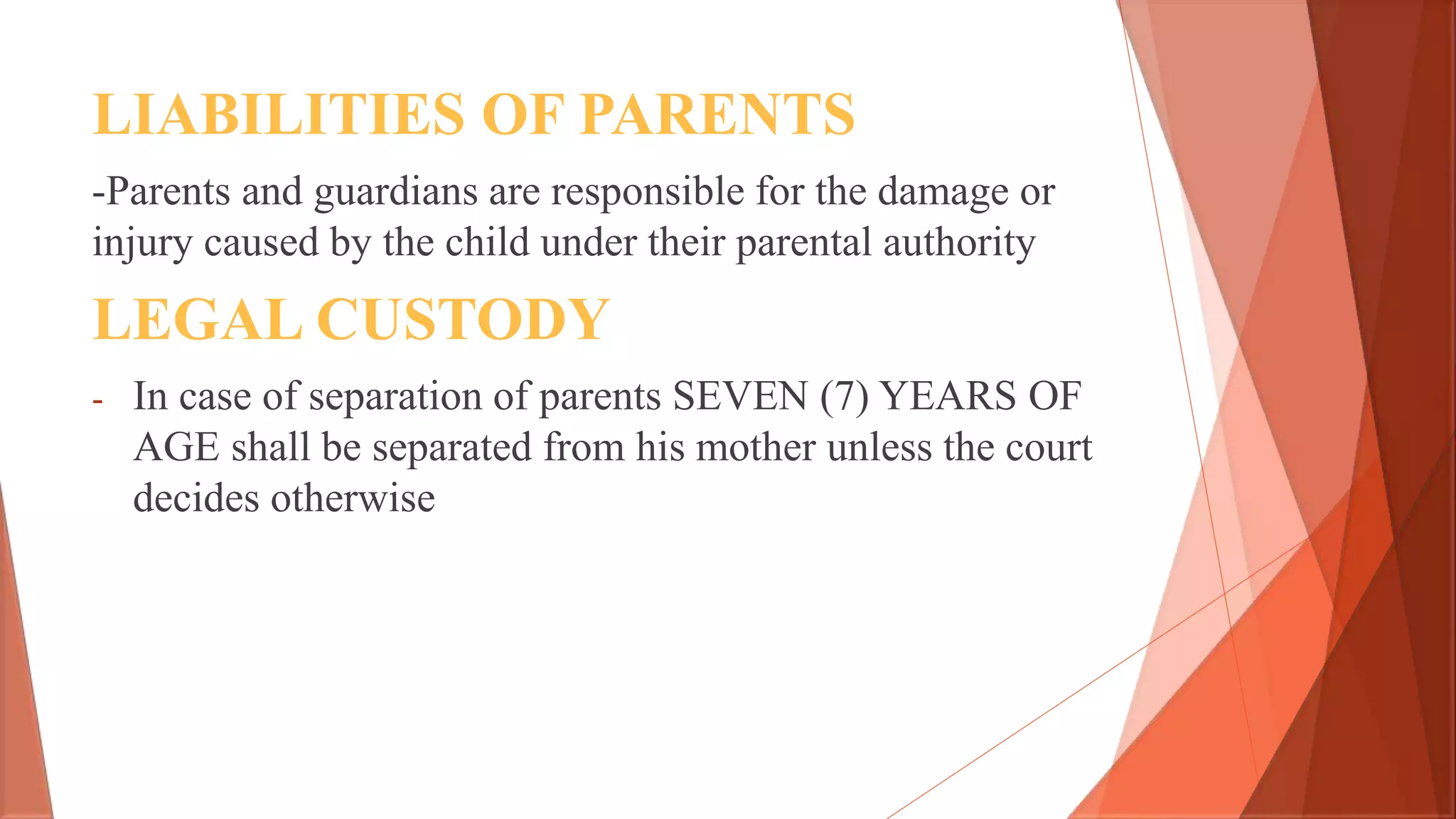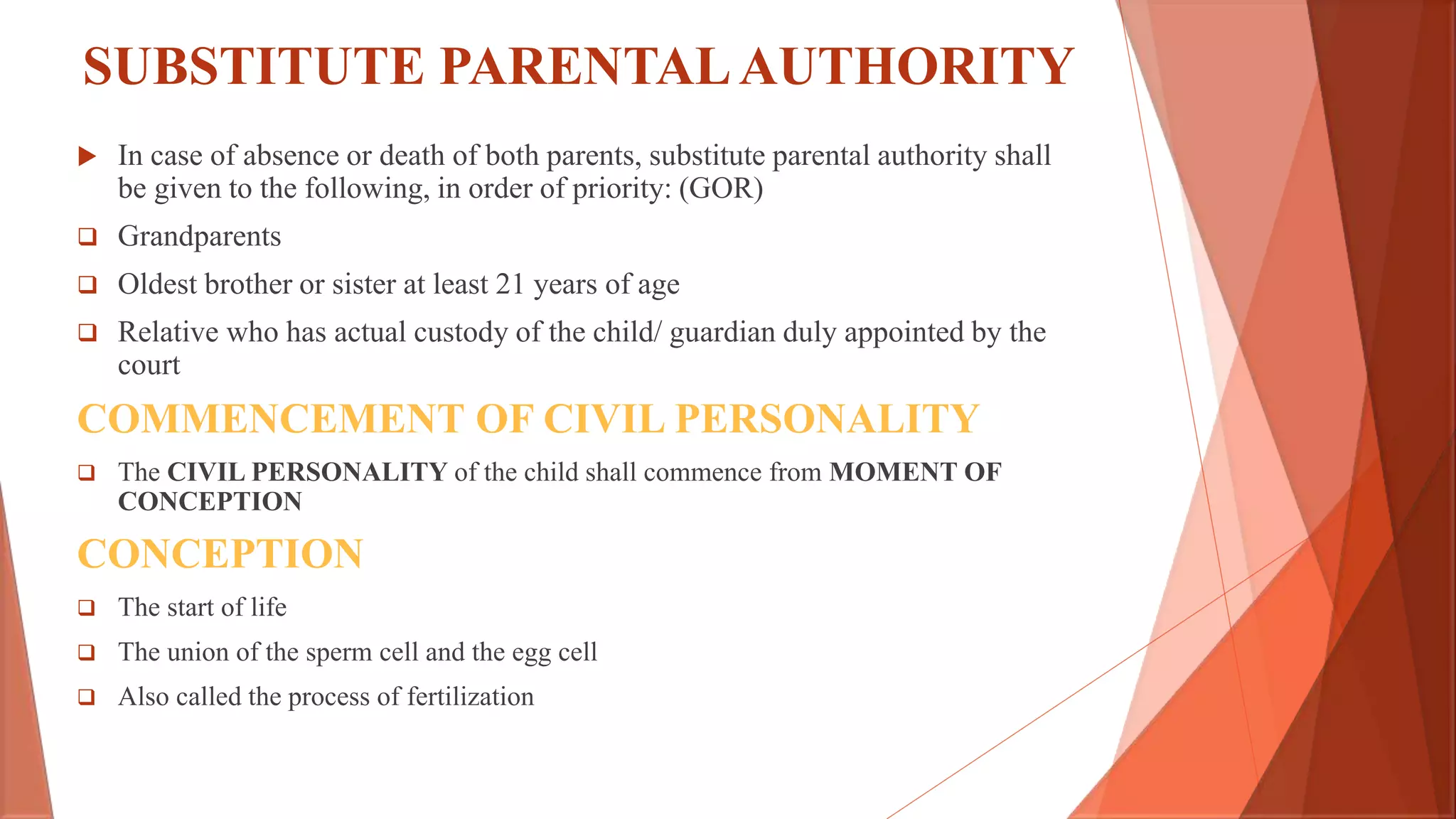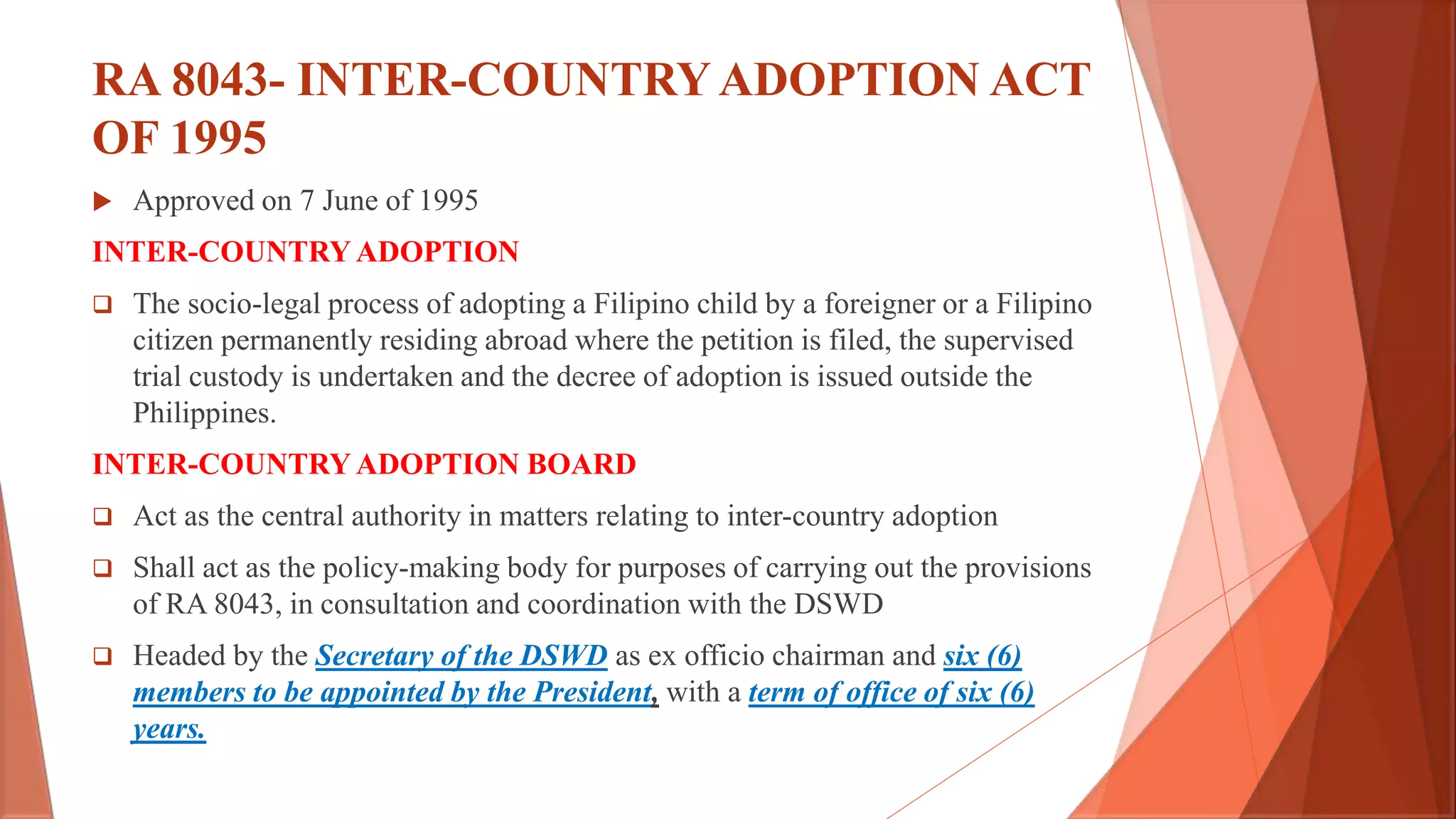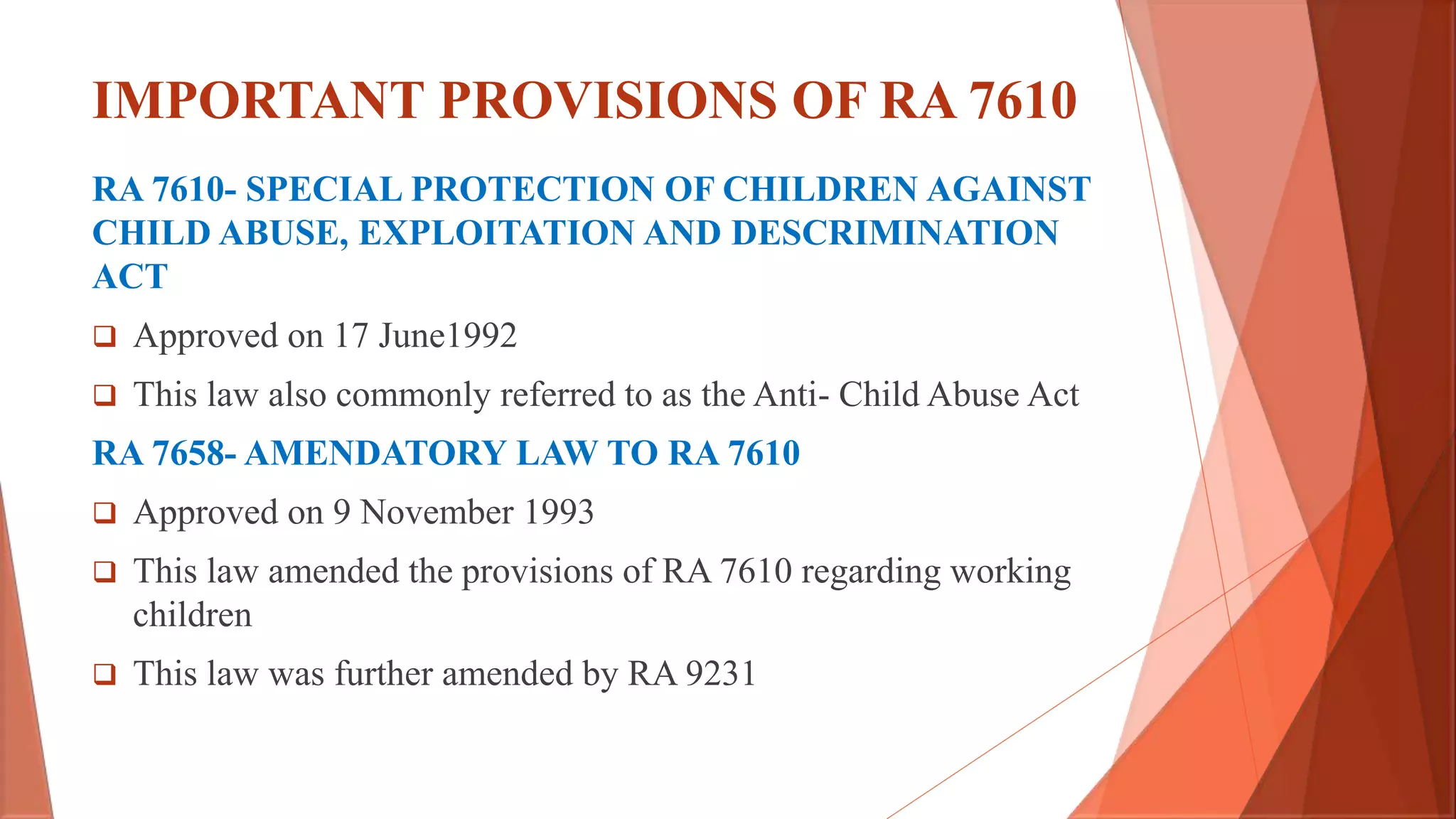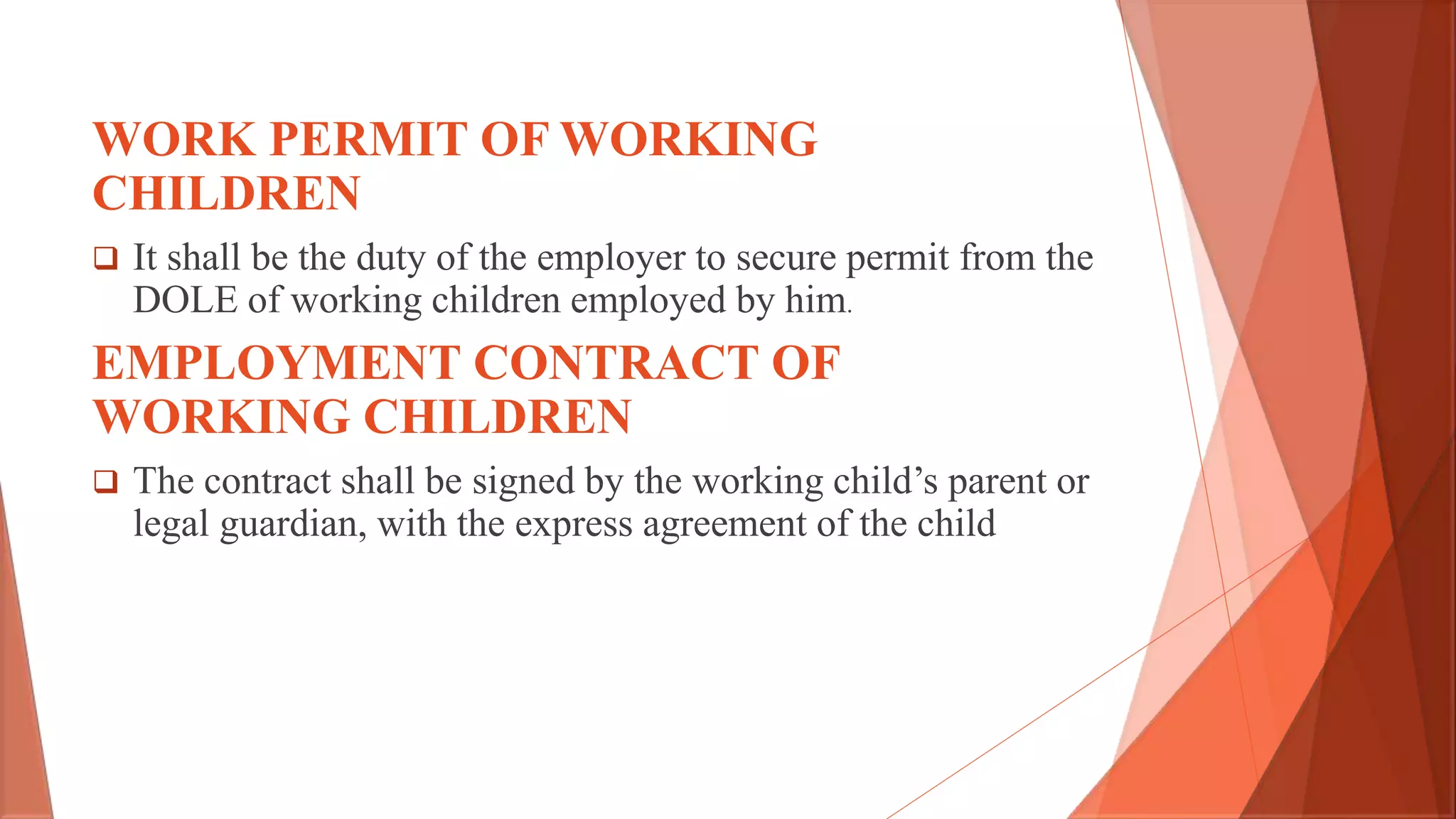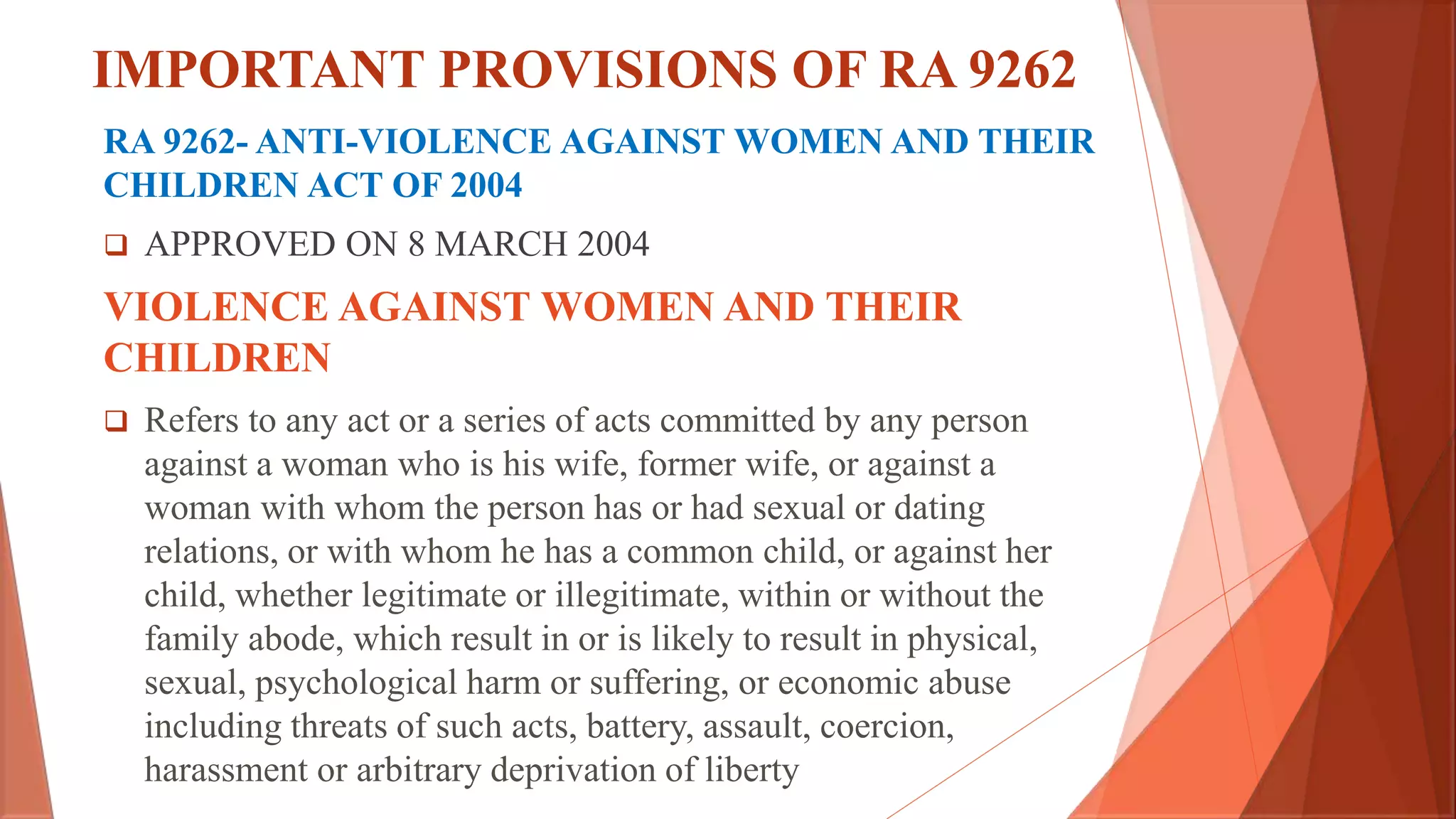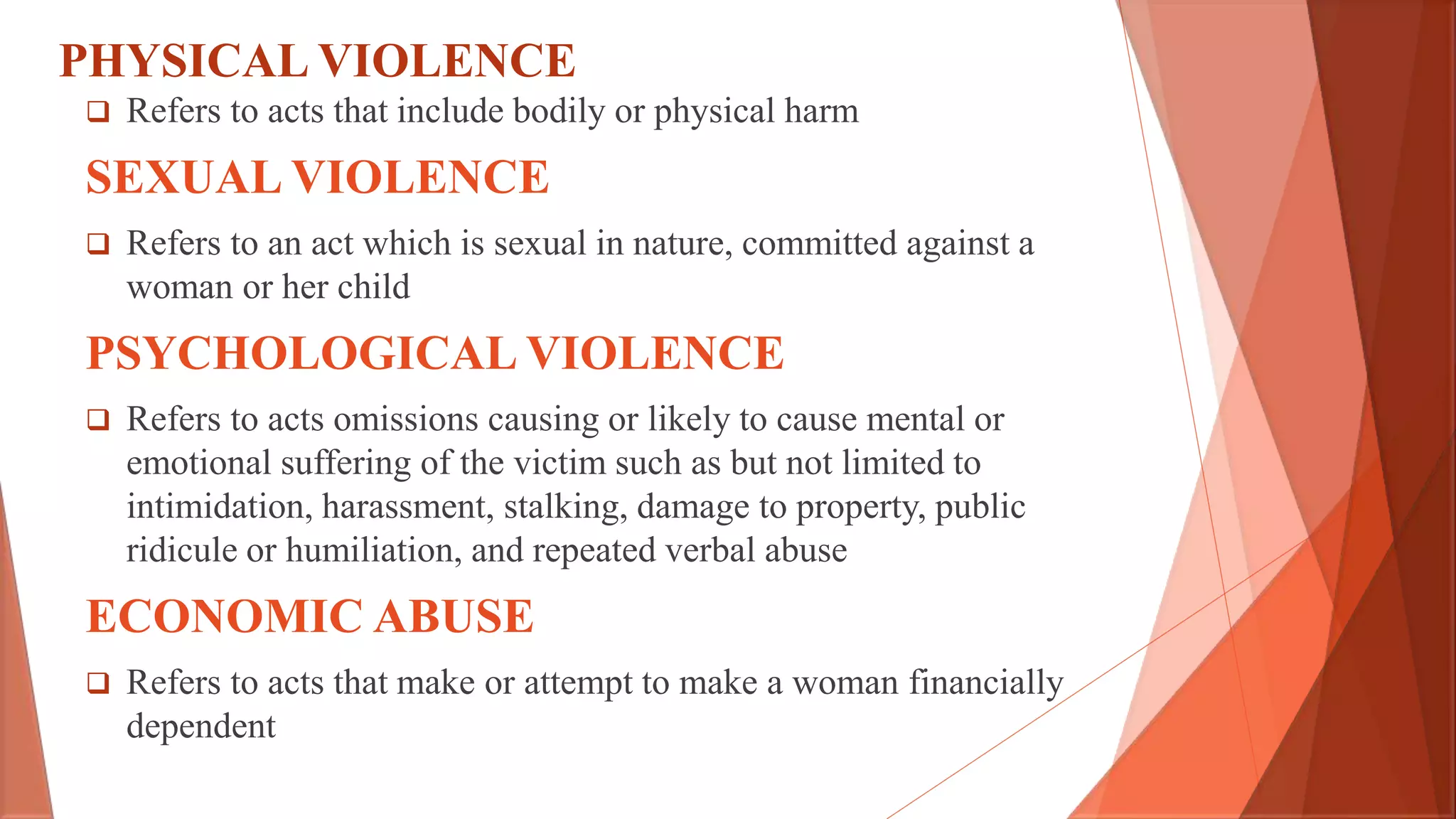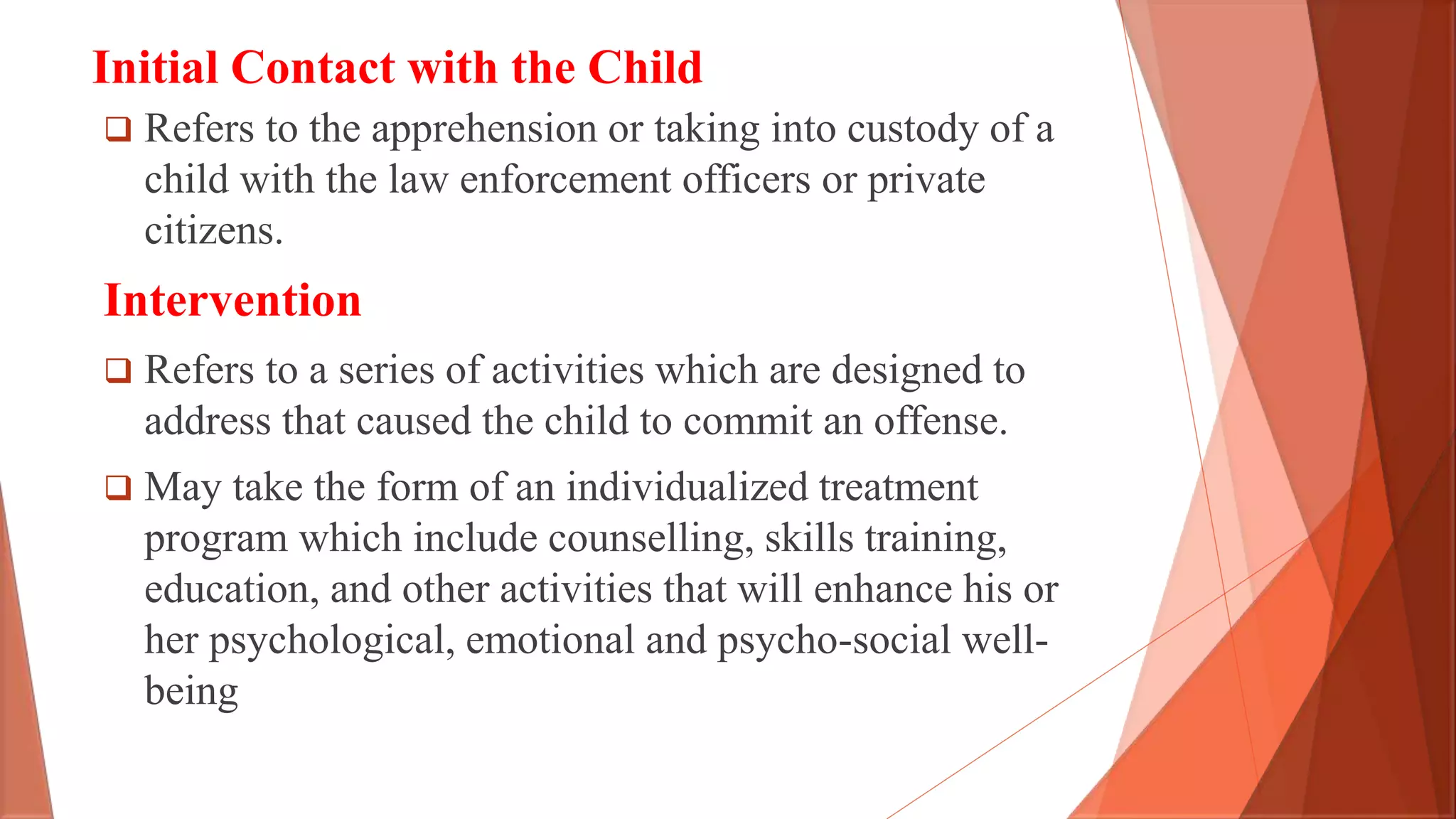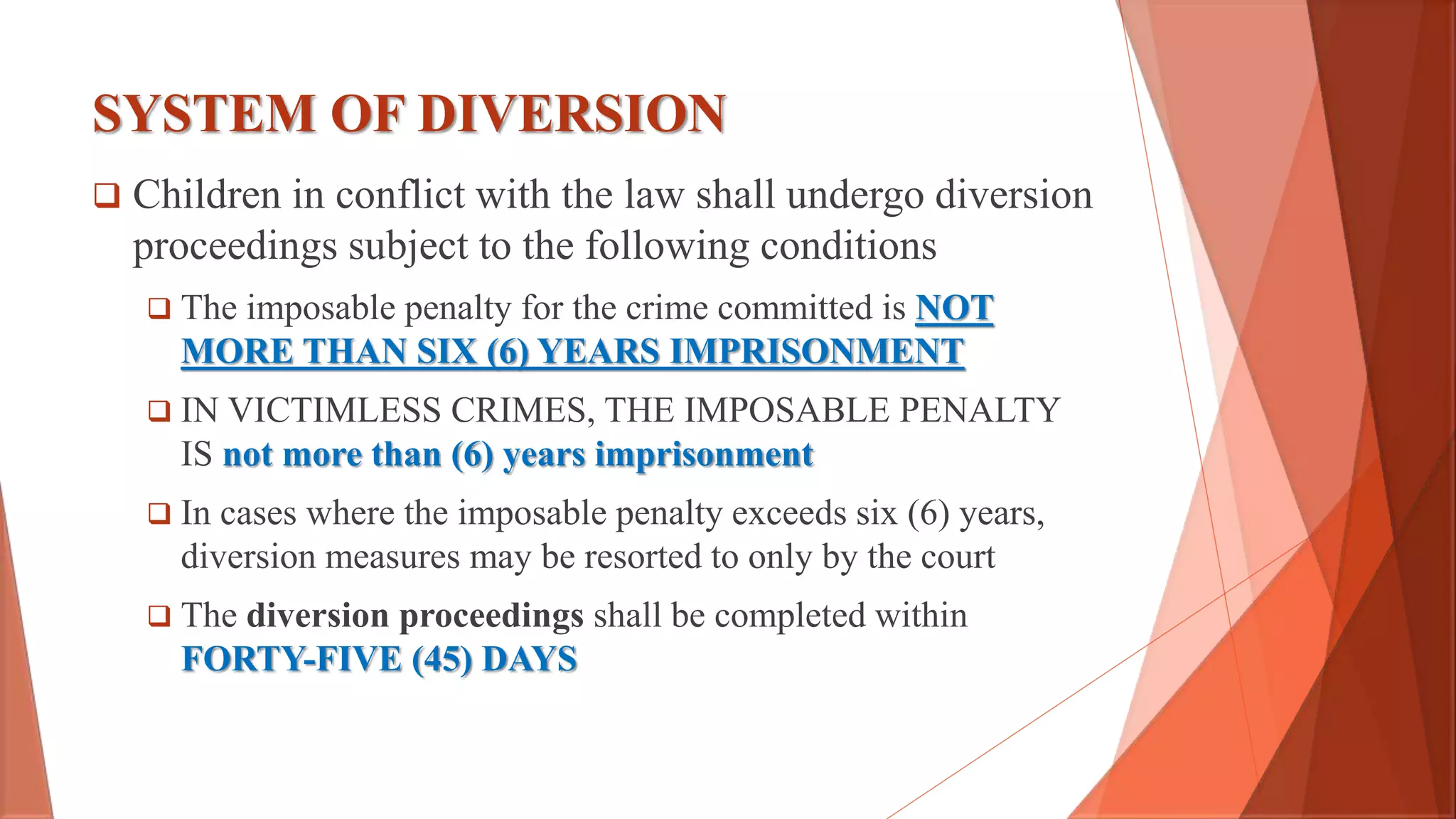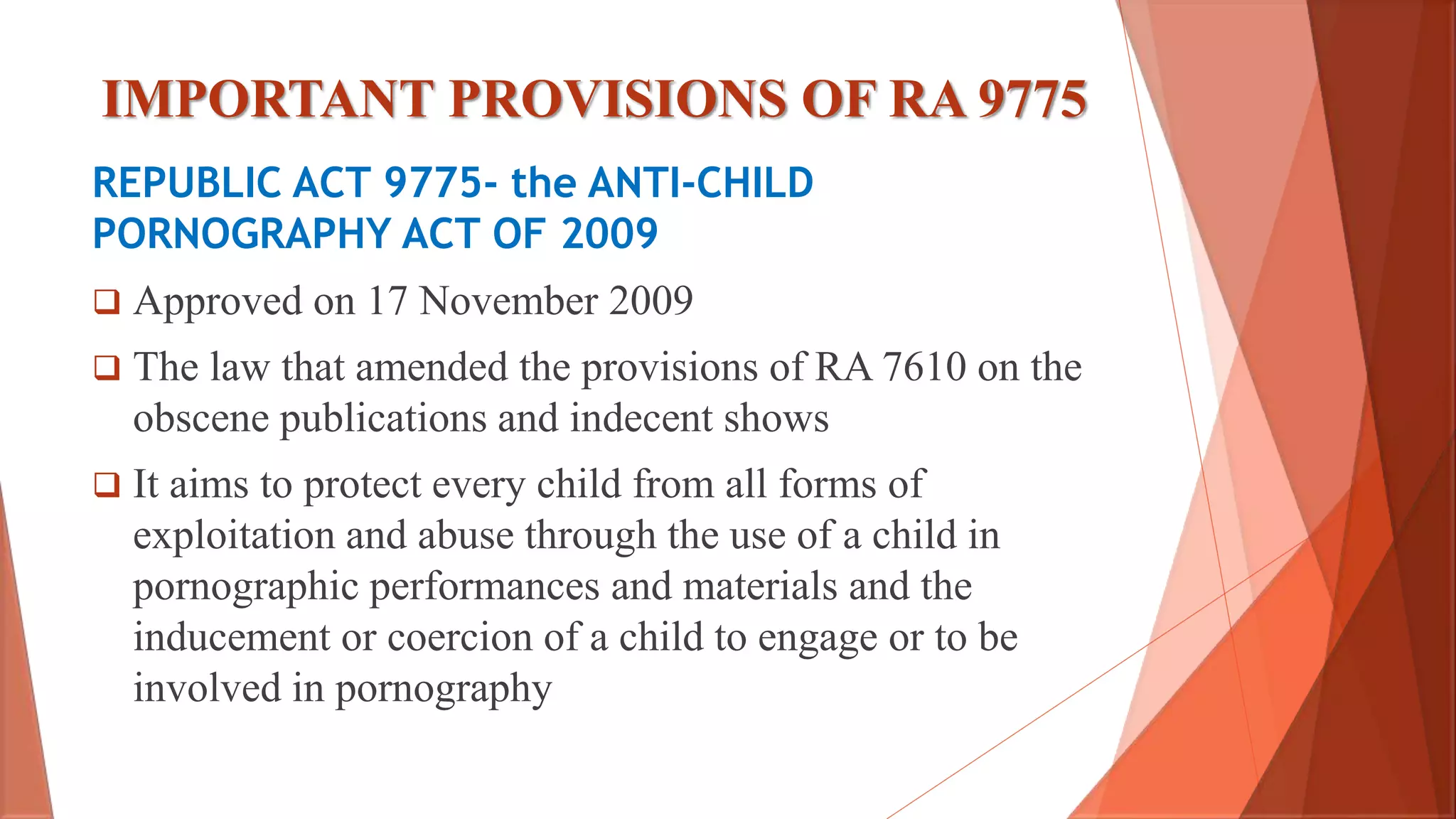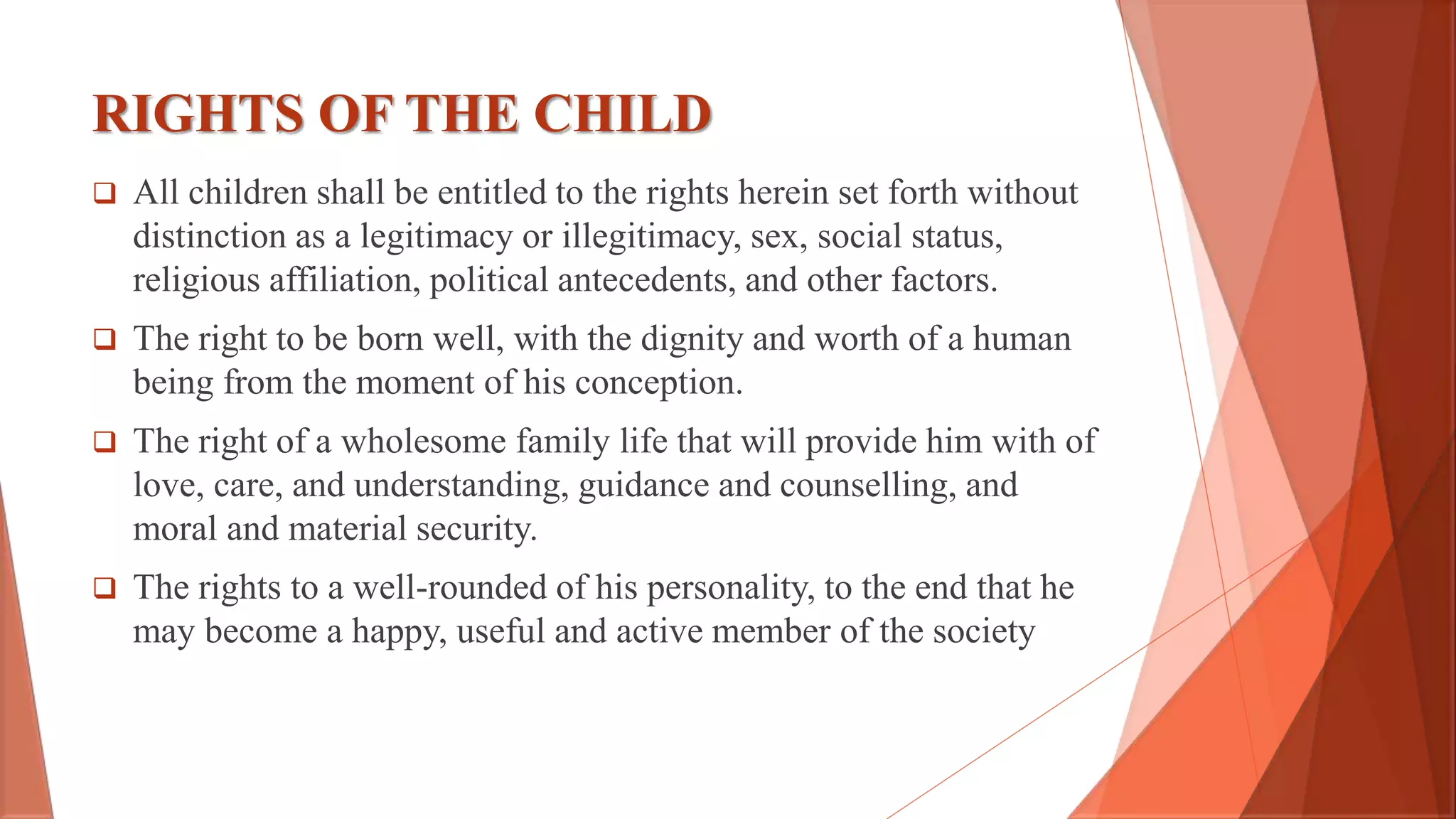This document provides an overview of juvenile delinquency and the juvenile justice system in the Philippines. It defines key terms like juvenile, delinquency, status offenses, and discusses factors that can contribute to juvenile delinquency like family, school, environment. It also outlines the history and development of the juvenile justice system from English common law to the establishment of the first juvenile court in Illinois in 1899 to laws passed in the Philippines like the Child and Youth Welfare Code (PD 603) and the Juvenile Justice and Welfare Act (RA 9344). The document also discusses approaches to studying delinquency and categories of children within the system.



